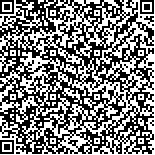| 引用本文: |
井宏颖,吕克宁,宋晓晨,周妍妍.地黄饮子对运动性疲劳小鼠运动能力的影响[J].湖南中医药大学学报,2021,41(1):34-38[点击复制] |
|
| |
|
|
| 本文已被:浏览 2400次 下载 580次 |
| 地黄饮子对运动性疲劳小鼠运动能力的影响 |
| 井宏颖,吕克宁,宋晓晨,周妍妍 |
| (黑龙江中医药大学, 黑龙江 哈尔滨 150040;哈尔滨体育学院, 黑龙江 哈尔滨 150008) |
| 摘要: |
| 目的 探讨地黄饮子对运动性疲劳小鼠运动能力的影响。方法 将昆明小鼠30只随机分为安静对照组(安静组)、疲劳模型组(模型组)和地黄饮子组,每组10只。采用游泳训练方式建立小鼠疲劳模型。常规饲料喂养外,地黄饮子组给予地黄饮子水煎液灌胃,安静组和模型组给予蒸馏水灌胃,连续给药28 d。ELISA法检测血尿素氮、睾酮、皮质醇含量和肝组织超氧化物歧化酶(SOD)活性、谷胱甘肽过氧化物酶(GSH-Px)活性、丙二醛(MDA)含量;Western blot法检测腺苷酸活化蛋白激酶(AMPK)和过氧化物酶增殖活化受体辅激活因子1α(PGC-1α)蛋白表达量。结果 与安静组比较,模型组小鼠体质量明显升高(P<0.05);血睾酮含量明显降低(P<0.05);皮质醇、尿素氮含量显著升高(P<0.05);肝组织GSH-Px、SOD活性显著降低(P<0.05),MDA含量明显升高(P<0.05);AMPK和PGC-1α的蛋白表达升高(P<0.05)。与模型组比较,地黄饮子组小鼠体质量增加明显(P<0.05);力竭游泳时间明显延长(P<0.05);血睾酮含量明显升高(P<0.05);皮质醇、尿素氮含量显著降低(P<0.05);肝组织GSH-Px、SOD活性显著增强(P<0.05),MDA含量明显降低(P<0.05);AMPK和PGC-1α的蛋白表达升高(P<0.05)。结论 地黄饮子能够在一定程度上起到缓解运动性疲劳的作用,其可能机制是通过降低运动性疲劳模型小鼠血皮质醇、尿素氮、MDA含量,提高肝组织GSH-Px、SOD活性及AMPK/PGC-1α信号通路对能量代谢的调节能力,从而提升小鼠运动能力。 |
| 关键词: 运动性疲劳 地黄饮子 运动能力 腺苷酸活化蛋白激酶 过氧化物酶增殖活化受体辅激活因子1α |
| DOI:10.3969/j.issn.1674-070X.2021.01.007 |
| 投稿时间:2020-08-25 |
| 基金项目:国家自然科学基金面上项目(81774197);黑龙江省教育厅基本科研业务费项目(2018KYYWF-FC04)。 |
|
| Effect of Radix Rehmanniae Decoction on Exercise Ability in Exercise-Induced Fatigue Mice |
| JING Hongying,LV Kening,SONG Xiaochen,ZHOU Yanyan |
| (Heilongjiang University of Chinese Medicine, Harbin, Heilongjiang 150040, China;Harbin Sport University, Harbin, Heilongjiang 150008, China) |
| Abstract: |
| Objective To study the effect of Radix Rehmanniae Decoction on exercise ability of mice with exercise fatigue. Methods 30 Kunming mice were randomly divided into quiet control group (quiet group), fatigue model group (model group) and Radix Rehmanniae Decoction group, and 10 mice in each group. The fatigue model of mice was established by swimming training. In addition to conventional feed feeding, the Radix Rehmanniae Decoction group was given a gavage of Radix Rehmanniae Decoction, and the quiet group and the model group were given gavage of distilled water for 28 consecutive days. The levels of blood urea nitrogen (BUN), testosterone and cortisol, the activities of superoxide dismutase (SOD), glutathione peroxidase (GSH-PX) and malondialdehyde (MDA) in liver tissue were detected by ELISA; the protein expression of adenylate activated protein kinase (AMPK) and peroxisome proliferating activated receptor coactivator-1α (PGC-1α) were detected by Western blot. Results Compared with the quiet group, the body mass of the model group was significantly increased (P<0.05); the content of serum testosterone decreased significantly (P<0.05); the contents of cortisol and BUN were significantly increased (P<0.05); the activity of GSH-PX and SOD in liver tissues was significantly decreased (P<0.05), and the content of MDA was significantly increased (P<0.05); the expression of AMPK and PGC-1α was increased (P<0.05). Compared with the model group, the body mass of mice in the Radix Rehmanniae Decoction group increased significantly (P<0.05); the exhausted swimming time was significantly prolonged (P<0.05); the blood testosterone content was significantly increased (P<0.05); the contents of cortisol and BUN was significantly reduced (P<0.05); GSH-Px and SOD activities in liver tissue were significantly increased (P<0.05), and MDA content was significantly reduced (P<0.05); the expression of AMPK and PGC-1α was increased(P<0.05). Conclusion Radix Rehmanniae Decoction can play a role in alleviating sports fatigue to a certain extent, the mechanism may be by reducing the content of cortisol, BUN and MDA in sports fatigue model mice, increasing the activity of GSH-Px and SOD, and enhancing the regulation of AMPK/PGC-1α signaling pathway on energy metabolism, which can enhance exercise capacity of mice. |
| Key words: exercise fatigue Radix Rehmanniae Decoction exercise ability adenylate activated protein kinase peroxisome proliferator activated receptor coactivator 1α |
|

二维码(扫一下试试看!) |
|
|
|
|




